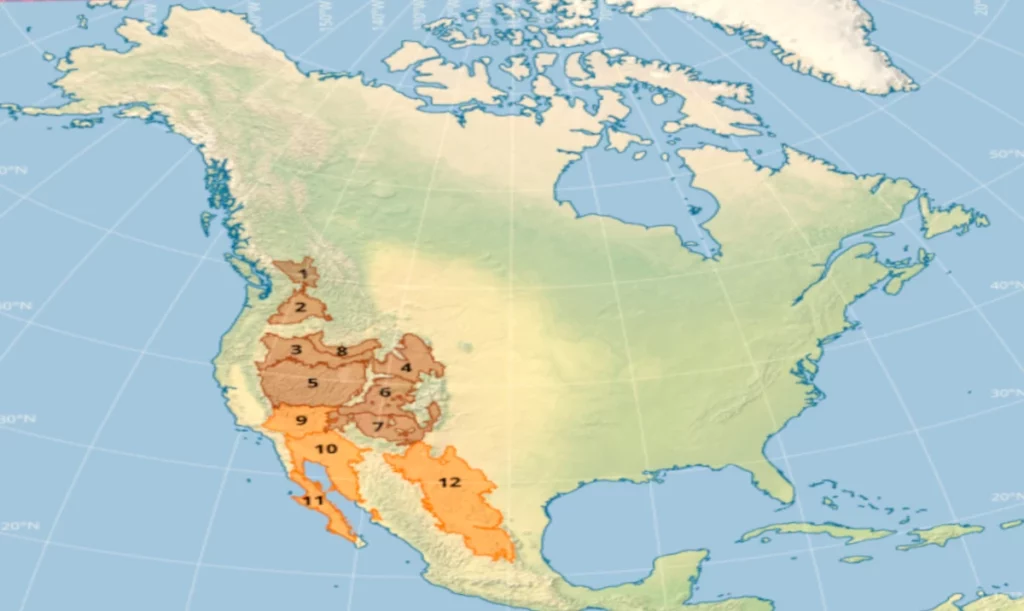The United States is home to a diverse array of landscapes, including deserts that cover a significant portion of its total land area. In fact, approximately 10.81% of the United States is classified as desert.
Deserts are defined as regions that receive less than 10 inches (25 cm) of annual precipitation, resulting in arid conditions and unique ecosystems.

Breakdown by Region
Approximately 10.81% of the total land area of the United States is classified as desert.
The total land area of the U.S. is estimated at around 3.8 million square miles (9.8 million square kilometers).
- Contiguous United States: The lower 48 states account for 5.587% of the total desert area in the U.S. This region includes well-known deserts such as the Mojave, Sonoran, Great Basin, and Chihuahuan deserts.
- Alaska and Hawaii: When including these non-contiguous states, the total desert area in the U.S. rises to about 18%. While Alaska does not have traditional deserts, it has arid tundra regions, and Hawaii has some dry areas that are not classified as deserts.
The Great Basin Desert is the largest desert in the contiguous U.S., spanning about 200,000 square miles. It is located in the western part of the country, bordered by the Sierra Nevada to the west, Snake River Plain to the north, Wasatch Mountains to the east, and Mojave and Sonoran deserts to the south.
The Chihuahuan Desert is the largest of the North American deserts, extending from southern New Mexico and Texas deep into Mexico. It covers approximately 174,472 km2 (67,364 mi2) within the United States. The Chihuahuan Desert is distinguished from other hot deserts in the Southwest by its higher elevation and summer-dominant rainfall.
Notable Desert Regions
The United States is home to four major desert regions, each characterized by unique landscapes, climates, and ecosystems.
- Mojave Desert: Located primarily in California, the Mojave Desert is known for its Joshua trees and extreme temperature variations.
- Sonoran Desert: Spanning Arizona, California, and Mexico, the Sonoran Desert is renowned for its biodiversity, including a variety of cactus species and diverse wildlife.
- Great Basin Desert: Covering much of Nevada and parts of Utah, Idaho, and Oregon, the Great Basin Desert is the largest desert in the U.S. and is characterized by its cold desert climate.
- Chihuahuan Desert: Extending across New Mexico and into Mexico, the Chihuahuan Desert is known for its unique flora and fauna, including various cacti and shrubs.
Read also: Where to find dunes in the United States

Your n°1 source of information on the world of sandsports and desert adventure travel. Our articles are the result of extensive research, personal experience, and knowledge-sharing within the global sandboarding community.